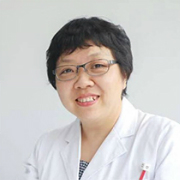- 高度及超高度近视眼轴、屈光度、...
- 重症单疱病毒性角膜炎延误治疗原...
- 我国急性细菌性结膜炎最新病原学...
- 角膜板层刀制瓣和FEMTO L...
- 今日典型问题之一(201209...
- 应用角膜地形图对准分子激光角膜...
- 重视飞秒激光角膜屈光手术的个性...
- 第五届全国角膜屈光手术学术会议...
- 快捷近视激光手术
- 今日经典之十--近视手术担心问...
- 今日经典之九--手术前小咨询
- 准分子激光原位角膜磨镶术后角膜...
- 角膜近视屈光手术的安全性与信任...
- 全国继续教育《个性化屈光手术治...
- 2012年国家级继续医学教育项...
- 今日经典问题之八(201210...
- 今日经典问题之七(201210...
- 今日经典之六(20121010...
- 今日经典问题之五(201210...
- 今日经典问题之四(201209...
- 今日经典问题之三(201209...
- 今日经典问题之二(201209...
- 准分子激光角膜屈光手术二十年回...
- 准分子激光角膜屈光手术的利与弊
- 准分子激光角膜屈光手术后的生活...
- 北京协和医院近视眼手术中心简介...
- 角膜表层手术与基质层手术后视觉...
- 北京协和医院近视手术费用
- 北京协和医院近视手术18年
- 角膜屈光手术二十年回顾
- 如何安全有效地进行近视手术
- 角膜屈光手术并发症十五年变迁
- 疑难性角膜屈光手术分析
- LASIK术后角膜上皮植入的分...
- 活体共聚焦显微镜对角膜移植后排...
- 中国6179例过敏性结膜炎的临...
- 溴芬酸钠与糖皮质激素在 LASIK术后的疗效比较
- 作者:李莹|发布时间:2013-06-25|浏览量:782次
陈实玉 姜洋 余晨颖 李莹
中国医学科学院 北京协和医院眼科 100730
通讯作者 李莹 liyingpumch@sohu.com
国家自然基金项目 ( 81170826)
【摘要】 目的 评价溴芬酸钠滴眼液用于近视lasik术后相对于糖皮质激素的安全性、有效性及耐受性。方法 采用前瞻性研究,观察行lasik治疗的119例(238只眼)患者,以等效球镜(se)-6.0d为界分为lasik 中低度组与lasik高度组,各组再随机根据用药方案分为试验组和对照组。其中试验组lasik术后使用0.1%溴芬酸钠滴眼液10天,对照组使用0.1%地塞米松10天,此外两组患者术前准备、手术方法及术后其它用药均相同。在术前及术后一天、十天、一月、三月、半年进行常规检查,包括裸眼视力(ucva)、最佳矫正视力(bcva)、眼压(iop)、角膜地形图和视觉症状与体征等,并对这些指标进行组间比较。结果 所有试验组和对照组术后在视力、角膜地形图数据测量上无显著性差异;但lasik中低度组及高度组术后iop值均显著低于对照组,而两组中试验组对患者眼压的影响均小于对照组。除lasik中低度试验组报告了1例术后十天角膜上皮愈合不佳,其余所有患者角膜上皮均愈合良好,未见角膜上皮下雾状混浊(haze)和弥漫性板层角膜炎(dlk)。此外,试验组均无停用溴芬酸钠的个例,而对照组总共有6例因眼压升高而使用降眼压药物;lasik中低度组术后屈光状态稳定。结论 溴芬酸钠滴眼液用于lasik术后(包括中低度和高度)安全、有效、具有良好的耐受性;在术后视力、眼压、抗炎、抑制屈光回退等方面可获得满意的效果;但高度近视患者还需要大样本长期临床观察。北京协和医院眼科李莹
comparison of clinical effects of bromfenac sodium versus glucocorticoid for post-lasik usage
chen shi-yu, jiang yang, yu chen-ying, li ying. department of ophthalmology, peking union medical college hospital, peking union medical college, chinese academy of medical sciences, beijing 100730, china
[abstract] objective to evaluate the safety, effectiveness, compliance of bromfenac sodium ophthalmic solution following lasik in comparison with glucocorticoid. methods in this prospective trial, 119 patients (238 eyes) undergoing lasik were divided into 2 groups according to their spherical equivalent (se < -6.0d or se ≥ -6.0d), and they were further randomized into a nsaids group and a control group within each group in accordance with their post-lasik medication. 96 patients were included in group one (se < -6.0d) with equal number of patients in nsaids and control group, while the other 23 patients were included in group two (se ≥ -6.0d), of which 11 patients were in nsaids group and 12 patients in control group. the only difference of treatment for patients in nsaids and control group was that they used 0.1% bromfenac sodium ophthalmic solution bid and 0.1% dexamethasone qid respectively after lasik for 10 days. results of the routine examinations done before and 1, 10, 30, 90 and 180 days after lasik were recorded including ucva, bcva, iop, corneal topography, ocular symptoms and signs, which were then used for comparison between nsaids and control group. results there was no statistically significant postoperative difference in visual acuity and corneal topography (k1, k2, sai, sri and cy) between nsaids and control group. however, nsaids group showed significantly lower iop than control group on day 10 post-lasik in group one, and on day 10 and 30 post-lasik in group two. no haze or dlk could be observed in both groups, and the epithelial flaps were all well positioned with satisfying healing process except for one case in the nsaids group from group two. bromfenac sodium ophthalmic solution was well tolerated by all patients in nsaids group without any case of discontinuation, but there were 6 patients from control group in total who were prescribe antiglaucoma medications due to elevated iop. the refractive status remained stable for patients from group one. conclusions bromfenac sodium ophthalmic solution is safe, effective and could be well tolerated by patients for post-lasik usage, and its performance in recovery of visual acuity, anti-inflammation and stablizing refractive status and intraocular pressure is satisfying. but further long-term observation with a large sample is needed to clarify its clinical effects on high-myopia patients.
[keywords] laser in-situ keratomileusis (lasik); bromfenac sodium ophthalmic solution; non-steroidal anti-inflammatory drugs (nsaids); glucocorticoid (gc)
TA的其他文章:




